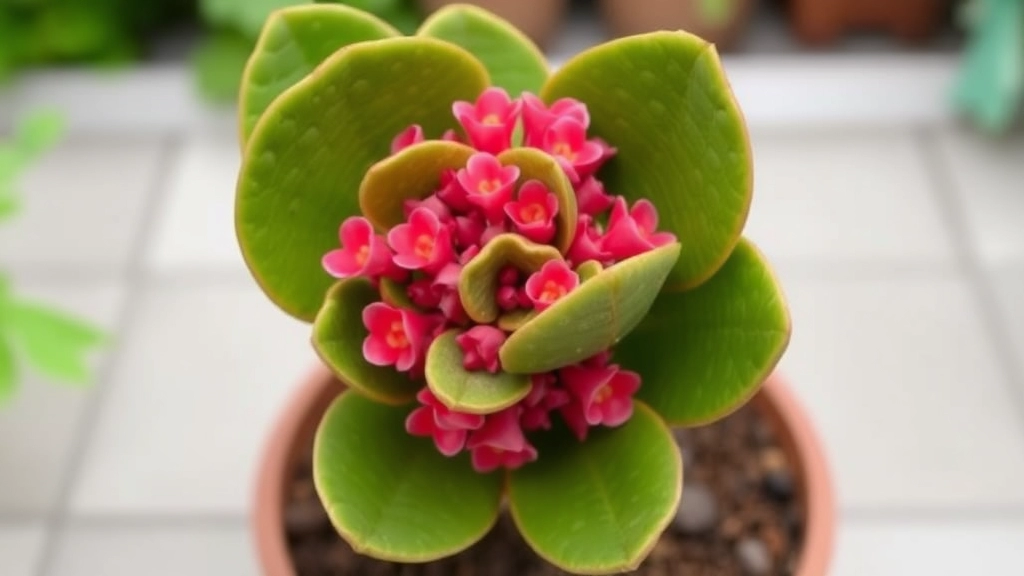How Big Can Kalanchoe Grow?
Ever wondered, “How big can Kalanchoe grow?” You’re not alone! As a plant enthusiast, I’ve seen these succulent beauties reach impressive heights and widths. Typically, Kalanchoes can grow up to 18 inches tall and 24 inches wide, depending on the species and care they receive. This makes them perfect for both indoor pots and outdoor gardens.
Proper Care for Optimal Growth
Proper care is crucial for optimal growth. Ensure your Kalanchoe gets plenty of sunlight, well-draining soil, and moderate watering. With the right conditions, you’ll be amazed at how lush and expansive these plants can become. So, let’s dive into the world of Kalanchoes and discover how to help them thrive!
Typical Size of Kalanchoe Plants
When considering Kalanchoe plants, many people wonder, “How big will my Kalanchoe get?”
Kalanchoe species generally exhibit a range of sizes, making them versatile for various gardening spaces.
- Standard Size: Most Kalanchoe varieties grow between 30 to 60 cm (1 to 2 feet) tall.
- Compact Varieties: Some types, like Kalanchoe blossfeldiana, can remain as short as 15 to 30 cm (6 to 12 inches).
- Larger Varieties: On the other hand, Kalanchoe luciae, also known as the paddle plant, can reach up to 90 cm (3 feet) in height under optimal conditions.
These sizes can vary based on factors such as species, growing conditions, and maintenance practices. For those looking to maximize the lifespan and size of their plants, following care tips for maximizing longevity is essential.
Factors Influencing Kalanchoe Growth
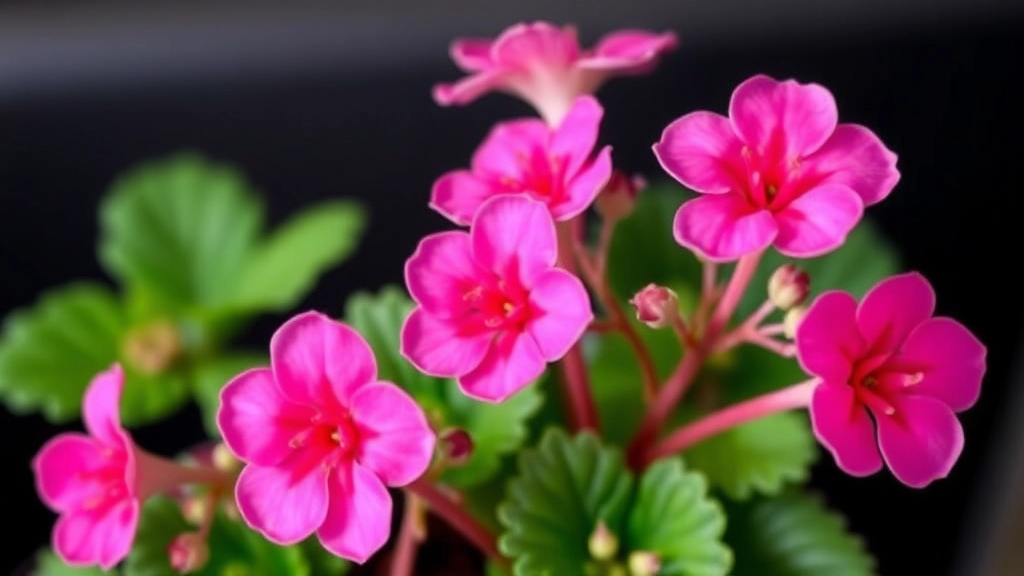
So, you’re keen to know what makes your Kalanchoe thrive, right?
Well, several factors can seriously impact how your plant grows. Let’s dive into them.
Light Exposure
Kalanchoe loves bright, indirect sunlight.
- Too little light? It may become leggy and weak.
- Too much direct sun? That can scorch those lovely leaves.
Watering Habits
Watering is a fine balance.
- Overwatering can lead to root rot, which is a killer for Kalanchoe.
- Underwatering might leave it looking sad and shrivelled.
Soil Quality
The right soil can make all the difference.
- A well-draining mix is crucial.
- Consider using a cactus or succulent mix to keep it happy.
Temperature and Humidity
Kalanchoe prefers a warm environment.
- Ideal temperatures are between 18°C and 24°C.
- Keep it away from cold drafts or extreme humidity, which can stress it out.
Fertilisation
Feeding your Kalanchoe can give it a growth boost.
- Use a balanced, water-soluble fertiliser during the growing season.
- Too much fertiliser can harm the plant, so stick to the recommended amounts.
Pests and Diseases
Watch out for common pests like aphids or mealybugs.
- Regularly check the undersides of leaves.
- Prompt action can save your plant from damage.
Optimal Growing Conditions for Kalanchoe Plants
When it comes to nurturing Kalanchoe plants, understanding their optimal growing conditions is essential for ensuring robust growth and vibrant blooms. Many plant enthusiasts often wonder: What do Kalanchoe plants need to thrive?
Light Requirements
Kalanchoe thrives in bright, indirect sunlight.
- Ideal Location: A south-facing window is perfect.
- Avoid Direct Sunlight: Too much direct exposure can scorch the leaves.
Temperature Preferences
Kalanchoe enjoys warmth, making it crucial to maintain an appropriate temperature.
- Optimal Range: Aim for 20-25°C (68-77°F) during the day.
- Nighttime Temperatures: A slight drop to around 15°C (59°F) is beneficial.
Watering Needs
One of the most common mistakes is overwatering.
- Frequency: Water only when the top inch of soil feels dry.
- Drainage: Ensure pots have drainage holes to prevent root rot.
Soil Composition
The right soil mix can make a significant difference.
- Well-Draining Soil: A cactus or succulent mix works wonders.
- pH Level: Aim for a slightly acidic to neutral pH (6.0-7.0).
Humidity Levels
Kalanchoe prefers lower humidity, making it suitable for indoor environments.
- Avoid High Humidity: Keep humidity levels below 50%.
- Air Circulation: Ensure good airflow around the plant.
Fertilisation
Feeding your Kalanchoe can enhance its growth.
- Frequency: Fertilize every 4-6 weeks during the growing season.
- Type of Fertiliser: Use a balanced, water-soluble fertilizer diluted to half strength.
Pruning and Maintenance for Size Control
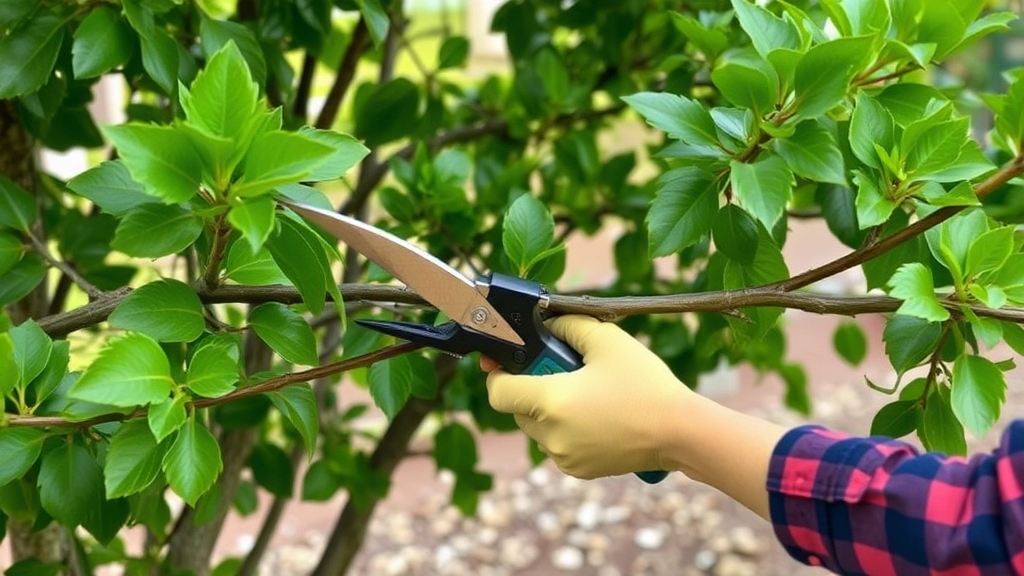
As we explore the essential practices for controlling the size of Kalanchoe plants, it’s important to understand how pruning and maintenance can significantly impact their growth. Many plant enthusiasts often wonder how to keep their Kalanchoe at a manageable size while still promoting healthy growth.
Why Prune Your Kalanchoe?
Pruning is not just about aesthetics; it serves several vital purposes:
- Encourages New Growth: Regular pruning stimulates the plant to produce new shoots, leading to a fuller appearance.
- Prevents Overcrowding: Removing excess leaves and stems helps prevent overcrowding, which can lead to poor air circulation and disease.
- Controls Size: Pruning allows you to maintain a desired size and shape, making it easier to fit your Kalanchoe into your space.
When to Prune
Timing is crucial when it comes to pruning Kalanchoe. The best time to prune is:
- After Flowering: Once the blooms have faded, it’s an ideal moment to cut back the plant. This encourages fresh growth for the next blooming season.
- Spring: Early spring is another excellent time, as the plant is gearing up for its active growing period.
How to Prune Your Kalanchoe
Here’s a simple guide to effective pruning:
- Use Clean Tools: Always start with sterilised scissors or pruning shears to avoid introducing any diseases.
- Identify Unhealthy Growth: Remove any dead or yellowing leaves, as well as any stems that appear weak or leggy.
- Cut Back Stems: Trim back stems to about 1-2 inches above a leaf node. This encourages branching and fuller growth.
- Shape the Plant: Aim for a balanced shape by removing any excessively long or unruly stems.
Maintenance Tips for Size Control
In addition to pruning, regular maintenance is key:
- Watering: Ensure you’re not overwatering, which can lead to root rot and stunted growth.
- Fertilising: Use a balanced fertiliser during the growing season to support healthy growth.
- Lighting: Position your Kalanchoe in bright, indirect sunlight to promote robust growth without stretching.
Common Varieties and Their Sizes
When considering Kalanchoe plants, many people wonder about the different varieties and how their sizes can vary.
Popular Kalanchoe Varieties:
- Kalanchoe blossfeldiana
- Size: Typically grows to about 30-45 cm (12-18 inches) tall.
- Features: Known for its vibrant flowers and thick, glossy leaves.
- Kalanchoe tomentosa (Panda Plant)
- Size: Reaches around 30-60 cm (12-24 inches) in height.
- Features: Distinctive fuzzy leaves with a silvery hue, often with brown edges.
- Kalanchoe luciae (Flapjack Plant)
- Size: Can grow up to 45 cm (18 inches) tall and wide.
- Features: Notable for its large, flat, pancake-like leaves that change colour with sunlight.
- Kalanchoe beharensis (Felt Plant)
- Size: Grows between 60-90 cm (24-36 inches).
- Features: Has thick, felt-like leaves and a more upright growth habit.
- Kalanchoe daigremontiana (Mother of Thousands)
- Size: Can reach heights of 90-120 cm (36-48 inches).
- Features: Produces numerous plantlets along the leaf edges, creating a striking appearance.
Understanding the sizes of these varieties can help you choose the right Kalanchoe for your space.
Key Takeaways:
- Size Range: Kalanchoe plants can vary significantly in size, from compact varieties to those that grow quite tall.
- Growth Habit: Some varieties are more upright, while others are bushier or spread out.
For more detailed care tips, check out our care guide for flowering Kalanchoe and our ultimate guide to caring for Kalanchoe Flaming Katy.
Potting and Repotting Guidelines
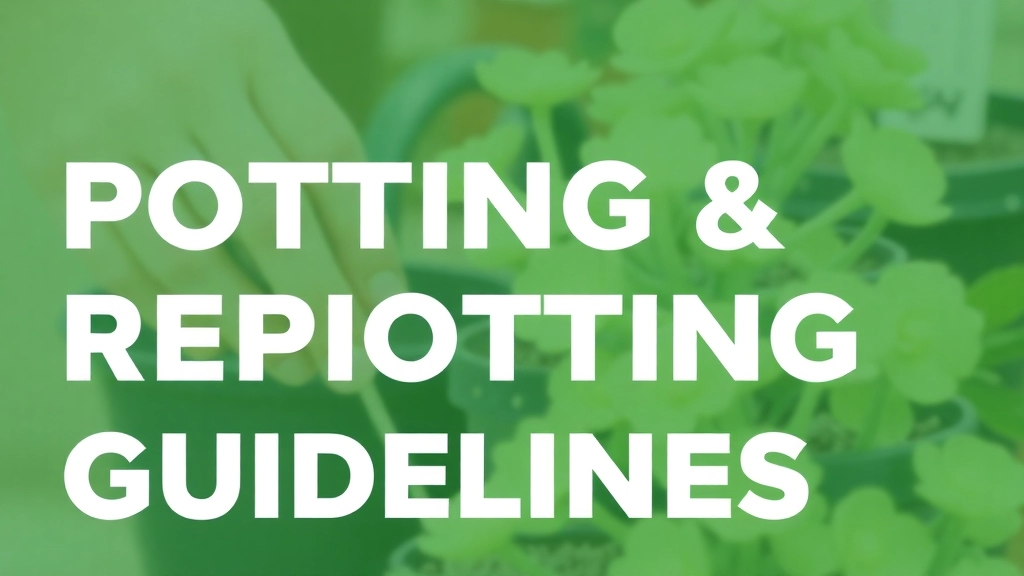
Are you wondering when to repot your Kalanchoe or what potting mix to use? You’re not alone!
Potting and repotting are crucial for keeping your Kalanchoe healthy and thriving.
When to Repot:
- Typically, every 1-2 years is ideal.
- If roots are poking out of the drainage holes, it’s time.
- Noticeable stunted growth can also signal a need for a bigger pot.
Choosing the Right Pot:
- Go for a pot that’s slightly larger than the current one.
- Ensure it has good drainage holes; Kalanchoe hates soggy roots!
- Terracotta pots are great as they help wick away excess moisture.
Potting Mix:
- Use a well-draining cactus or succulent mix.
- You can make your own by mixing regular potting soil with sand or perlite.
- Aim for a mix that retains some moisture but drains quickly.
Potting Steps:
- Remove the Kalanchoe from its old pot gently.
- Loosen any tightly bound roots.
- Place it in the new pot and fill with fresh potting mix.
- Water lightly to settle the soil.
After Repotting Care:
- Keep it in a shaded area for a week to reduce stress.
- Gradually reintroduce it to bright, indirect sunlight.
- Avoid heavy watering for a few weeks; let it adjust.
Troubleshooting Growth Issues in Kalanchoe Plants
As we delve deeper into caring for Kalanchoe plants, it’s essential to address potential growth issues that may arise. Many enthusiasts often find themselves asking, “Why is my Kalanchoe not thriving?” or “What can I do to improve its health?” Let’s explore some common problems and practical solutions.
Seasonal Growth Patterns
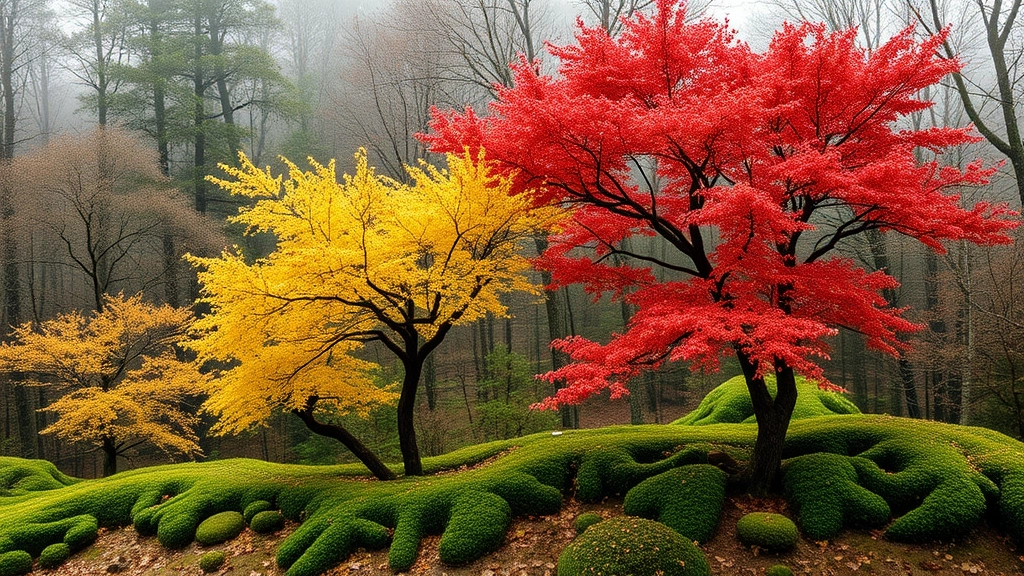
Ever wondered why your Kalanchoe seems to thrive one season and struggle the next?
Understanding seasonal growth patterns can make all the difference in keeping your plant healthy and vibrant.
Spring Awakening
- As the days get longer and warmer, Kalanchoe plants enter their active growth phase.
- You might notice new leaves sprouting and even flowers blooming.
- This is the perfect time to give them a bit of extra love with fertiliser.
Summer Sunshine
- In the summer, Kalanchoe enjoys the sun but can be sensitive to extreme heat.
- Keep an eye on moisture levels; they might need more water as they soak up the sunshine.
- Be cautious of direct, scorching sunlight which can lead to leaf burn.
Autumn Adjustments
- As temperatures start to drop, your Kalanchoe may slow down.
- This is a good time to reduce watering and let them rest a bit.
- You might see fewer blooms, but that’s perfectly normal.
Winter Dormancy
- When winter rolls in, Kalanchoe enters a dormant phase.
- It’s crucial to keep them in a cooler spot with indirect light.
- Water sparingly—overwatering during this time can lead to root rot.
Indoor vs. Outdoor Growth Potential
When considering the growth potential of Kalanchoe plants, many enthusiasts often wonder whether these vibrant succulents thrive better indoors or outdoors.
Indoor Growth Potential
Kalanchoe plants can flourish indoors, provided they receive adequate light and care. Here’s what to keep in mind:
- Light Requirements: Kalanchoes prefer bright, indirect sunlight. A south-facing window is ideal.
- Temperature: They thrive in temperatures ranging from 15°C to 25°C. Avoid cold drafts.
- Humidity: Indoor environments can be dry. Occasionally misting the leaves can help mimic their natural habitat.
- Watering: Allow the soil to dry out between waterings. Overwatering is a common issue.
Outdoor Growth Potential
When grown outdoors, Kalanchoe plants can reach their full potential, benefiting from natural sunlight and fresh air. Consider the following:
FAQs about Kalanchoe Growth
How big can Kalanchoe grow?
Kalanchoe plants can grow up to 12-18 inches in height, depending on the variety and growing conditions. Proper care, including adequate light, water, and nutrients, can help them achieve their full growth potential.
What factors influence the growth of Kalanchoe?
Several factors influence Kalanchoe growth, including light exposure, watering habits, soil quality, temperature, humidity, fertilisation, and pest management. Ensuring these conditions are optimal can significantly enhance growth.
How much light does Kalanchoe need?
Kalanchoe thrives in bright, indirect sunlight. Too little light can make the plant leggy and weak, while too much direct sun can scorch its leaves.
How often should I water my Kalanchoe?
Watering Kalanchoe requires a fine balance. Overwatering can lead to root rot, while underwatering can leave the plant looking sad and shrivelled. It’s best to let the soil dry out between waterings.
What type of soil is best for Kalanchoe?
A well-draining soil mix is crucial for Kalanchoe. Using a cactus or succulent mix can help keep the plant healthy by preventing water from accumulating around the roots.
What are the ideal temperature and humidity levels for Kalanchoe?
Kalanchoe prefers temperatures between 18°C and 24°C. It should be kept away from cold drafts and extreme humidity, which can stress the plant.
How often should I fertilise my Kalanchoe?
Fertilising during the growing season with a balanced, water-soluble fertiliser can boost Kalanchoe growth. However, too much fertiliser can harm the plant, so it’s important to follow recommended amounts.
How do I control the size of my Kalanchoe?
Pruning and regular maintenance are key to controlling the size of Kalanchoe. Prune the plant after flowering or in early spring to encourage new growth and maintain a manageable size.
When should I repot my Kalanchoe?
Repotting Kalanchoe every 1-2 years is generally ideal. Signs that it’s time to repot include roots poking out of the drainage holes and noticeable stunted growth.
What kind of pot is best for Kalanchoe?
A pot slightly larger than the current one with good drainage holes is best. Terracotta pots are particularly good as they help wick away excess moisture.
What should I do after repotting my Kalanchoe?
After repotting, keep the plant in a shaded area for a week to reduce stress. Gradually reintroduce it to bright, indirect sunlight and avoid heavy watering for a few weeks.
How do seasonal changes affect Kalanchoe growth?
Kalanchoe has distinct seasonal growth patterns. It thrives in spring and summer, slows down in autumn, and enters dormancy in winter. Adjusting care routines according to these patterns can help maintain plant health.
References
-
How to Grow Kalanchoe Plants
-
Kalanchoe Plant Care: Growing Kalanchoe as a Houseplant
-
Kalanchoe: How to Grow and Care for Kalanchoe Plants
